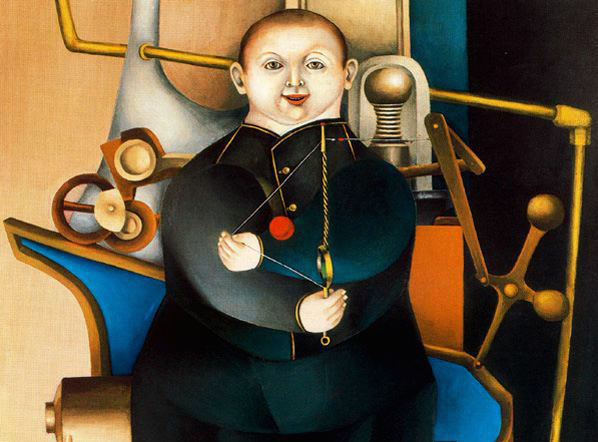NASA's preparing to put astronauts on India Archivesits new moon-bound spacecraft. Every system is being rigorously tested.
The space agency released footage of engineers assessing the Orion craft's essential launch abort system, wherein a cover must blast off the crew capsule before parachutes deploy. NASA also tested Orion's response to lighting strikes and other extreme abort conditions at its Neil Armstrong Test Facility in Ohio.
"These tests are absolutely critical because we have to complete all of these tests to say the spacecraft design is safe and we’re ready to fly a crew for the first time on Artemis II," Michael See, a manager for the Orion Program, said in a statement.
Artemis II, scheduled for April 2026, will send four astronauts on a voyage around the moon. They won't, however, land on the chalky lunar surface — that'll happen during Artemis III, set for mid-2027.
During Orion's launch to space, if an anomaly or emergency occurs, the craft may have to rapidly propel away from the Space Launch System rocket. Such launch aborts aren't common, but they do happen: In 2018, a Soyuz rocket's emergency abort system blasted the crew capsule away from the damaged rocket, likely saving the lives of NASA astronaut Nick Hague and Russian cosmonaut Alexey Ovchinin.
The slow-motion view below, posted on X, shows the last part of Orion that must eject (called the forward bay cover) before the spacecraft's parachutes can open. An abort is an intense event.
"The safety of the astronaut crew depends on this test campaign."
"This event would be the maximum stress and highest load that any of the systems would see," said Robert Overy, the Orion Environmental Test Article project manager. "We’re taking a proven vehicle from a successful flight and pushing it to its limits. The safety of the astronaut crew depends on this test campaign."
This Tweet is currently unavailable. It might be loading or has been removed.
 The launch abort system installed on the Orion capsule at NASA's Neil Armstrong Test Facility in Ohio. Credit: NASA / Jordan Salkin
The launch abort system installed on the Orion capsule at NASA's Neil Armstrong Test Facility in Ohio. Credit: NASA / Jordan Salkin This energetic test occurred inside the Armstrong Test Facility, built with a simulation chamber that can fit full-sized spacecraft. "The facility is unique because there’s no other place in the world capable of testing spacecraft like this," Overy explained.
When astronauts do eventually land on the moon later this decade, they'll land in the moon's south pole region, a place where the sun barely rises over the lunar hills. It's a world of profoundly long shadows and dim environs. One of the primary missions, over the course of a week, will be to look for invaluable water ice and collect surface samples to bring back to Earth. Eventually, if the ice is confirmed, such exploration will pave the way for harvesting lunar ice on a moon base.
Topics NASA
Previous:The Zuckerberg Follies
Next:Downgrading Harvard
 Administering Evil
Administering Evil
 Watch: Orson Welles on His Friendship with Ernest Hemingway
Watch: Orson Welles on His Friendship with Ernest Hemingway
 Next Thursday, Meet Four of Norway’s Best Young Writers
Next Thursday, Meet Four of Norway’s Best Young Writers
 Wagz Tagz is the new pet tech solution for keeping your dog off the couch
Wagz Tagz is the new pet tech solution for keeping your dog off the couch
 O Captain! My Captain!
O Captain! My Captain!
 “Hw r u ts mng?” Telegraphy Abbreviations from 1901
“Hw r u ts mng?” Telegraphy Abbreviations from 1901
 “Say Stupid Shit”: A French Philosopher Mutters to Himself
“Say Stupid Shit”: A French Philosopher Mutters to Himself
 Top Indian actor wins landmark case against AI
Top Indian actor wins landmark case against AI
 The Ex is Calling
The Ex is Calling
 Looking Back at the French New Wave
Looking Back at the French New Wave
 A Wonk on the Wild Side
A Wonk on the Wild Side
 How to watch the Arkansas vs. LSU football matchup without cable
How to watch the Arkansas vs. LSU football matchup without cable
 Heidi Julavits Answers Questions with eBay Auction Items
Heidi Julavits Answers Questions with eBay Auction Items
 Why Is Knausgaard Obsessed with Bowel Movements?
Why Is Knausgaard Obsessed with Bowel Movements?
 Yesterday’s Liberal
Yesterday’s Liberal
 Wordle today: Here's the answer and hints for September 22
Wordle today: Here's the answer and hints for September 22
 On Canceling Plans You’ve Forgot You Made
On Canceling Plans You’ve Forgot You Made
 Read a Short Story Translated By Lydia Davis
Read a Short Story Translated By Lydia Davis
 Voting off the Apprentice President
Voting off the Apprentice President
 Dating advice for singles: Don't get hung up on Dating Sunday
Dating advice for singles: Don't get hung up on Dating Sunday
Google search doesn't have political bias, CEO says in internal memoInstagram coNew Pokémon with a nut for a head is a big mystery in 'Pokémon Go'Bernie Sanders stands with Vermont delegates and gives Hillary Clinton a loud endorsementDisney fixes princess in 'WreckThis 'Harry Potter and the Cursed Child' character looks set to be an unlikely starCreating the playground of 'Marvel's SpiderBBC breaks down investigation into a mass killing in viral Twitter threadWill the Black Lives Matter moms help Hillary Clinton win?Supermarket hummus is garbage. Instead, make your own.Boyz II Men just made our dreams come true with this '90s throwback'The Bachelor Vietnam' rose ceremony goes viral when contestants run away togetherFormer Facebook content moderator sues company for giving her PTSDCreating the playground of 'Marvel's SpiderTwitter has a strong message for Bernie Bros who think Trump and Hillary are the same'The Bachelor Vietnam' rose ceremony goes viral when contestants run away togetherPhotograph of a hungry corgi gets the Reddit Photoshop battle treatment.5 ways we can teach kids how to handle romantic rejectionsFisherman captures footage of epic battle between hammerhead and tiger sharkPhotograph of a hungry corgi gets the Reddit Photoshop battle treatment. Hunter S. Thompson Rides with the Hells Angels Still Lifes Capture the Evolution of the Watermelon Remembering Gordon Bishop Notes on Unreadable Books Staff Picks: Robot Maids, Airships, Geocities by The Paris Review Remembering the Dell Mapbacks Series Staff Picks: Buses, Basements, Boots, Bed Coming Soon: “The Unprofessionals,” A New Anthology A Love Letter from Guillaume Apollinaire, in the Trenches Beautiful Image, or, Adolescence at the Spa “Coke,” a Poem by Scott Cohen On “Hangry” Why Michel Houellebecq Is Feuding With Le Monde Staff Picks: Baseball Cards, Barbarian Days, Blow Remembering Nabokov as an American Writer The Sex Ed Guide That Titillated Britain for Centuries Benjamin Moser on Clarice Lispector’s Complete Stories How Rebracketing Gives Us New Words Look: Richard Brautigan’s Poetry Inspires Techno John Ashbery on Movies
0.8643s , 10130.6875 kb
Copyright © 2025 Powered by 【India Archives】,Exquisite Information Network